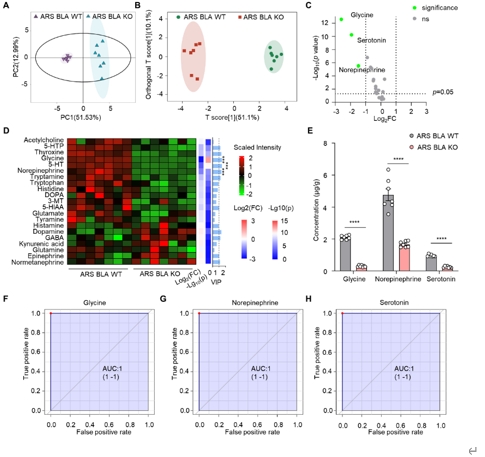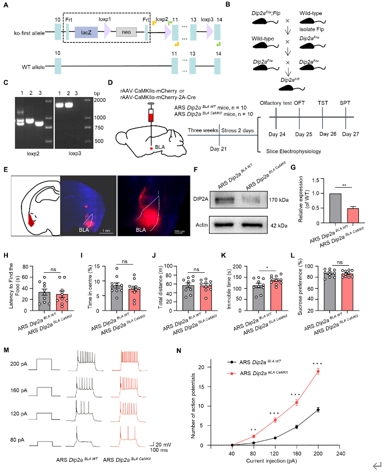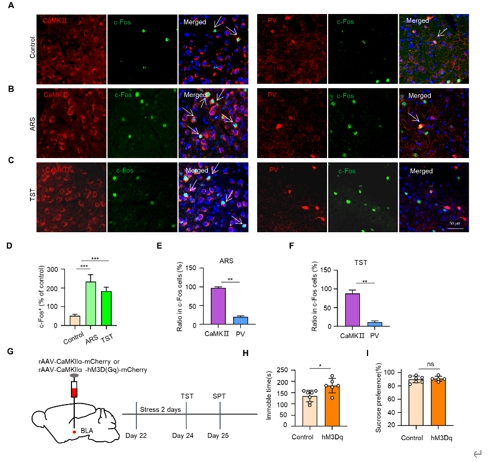中国神经再生研究(英文版) ›› 2025, Vol. 20 ›› Issue (6): 1735-1748.doi: 10.4103/NRR.NRR-D-23-01871
Dip2a可调节基底外侧杏仁核的应激易感性
Dip2a regulates stress susceptibility in the basolateral amygdala
Jing Li, Zixuan He, Weitai Chai, Meng Tian, Huali Yu, Xiaoxiao He, Xiaojuan Zhu*
- Key Laboratory of Molecular Epigenetics, Ministry of Education; Institute of Genetics and Cytology, Northeast Normal University, Changchun, Jilin Province, China
摘要:
中枢神经系统中神经递质代谢的失调会导致情绪障碍,如抑郁、焦虑和创伤后应激障碍。单胺类和氨基酸是的重要神经递质。作者既往研究已发现盘状相互作用蛋白2A(Dip2a)敲除小鼠表现出大脑发育障碍和血清中氨基酸代谢异常,因此提示DIP2A可能参与神经疾病相关的氨基酸类神经递质的代谢。为此,此次实验使用靶向神经递质代谢组学分析发现,Dip2a敲低会导致基底外侧杏仁核和内侧前额叶皮质中的色氨酸和甲状腺素代谢异常。此外,急性束缚应激可降低了Dip2a 敲低小鼠基底外侧杏仁核中的5-羟色胺水平。此外,Dip2a在基底外侧杏仁核兴奋性神经元中大量表达,而这些神经元中Dip2a缺失会导致小鼠出现绝望样行为。这些发现表明,基底外侧杏仁核中的DIP2A可能参与调节应激易感,这为了解DIP2A在情感障碍中的作用提供了参考。
https://orcid.org/0000-0002-0574-950X (Xiaojuan Zhu)


